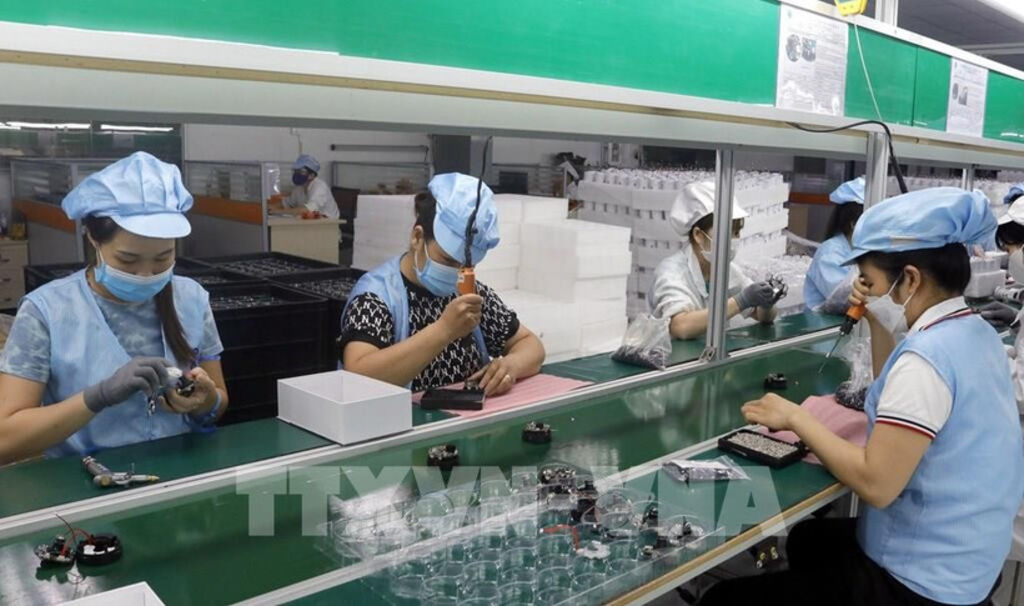 |
| From 2020 to October 2025, the capital city attracted more than USD 15.6 billion in FDI__Photo: VNA |
Despite global economic fluctuations and the heavy impact of the COVID-19 pandemic, Hanoi has continued to attract strong flows of foreign direct investment (FDI) during 2020-25, reinforcing its position as one of Vietnam’s most dynamic growth hubs.
From 2020 to October 2025, the capital city attracted more than USD 15.6 billion in FDI, reflecting both its business appeal and the city authorities’ persistent efforts to improve infrastructure, streamline administrative procedures, and strengthen governance.
Of this total, over USD 10.8 billion came from capital expansion in 1,007 existing projects, accounting for 69.2 percent of total FDI during the period. This shows that most investors are not new entrants but long-term partners expanding their operations, a clear sign of investor confidence in Hanoi’s business climate and growth prospects.
In the first ten months of 2025 alone, the city recorded USD 3.894 billion in FDI, almost triple the figure of the same period last year and well above the annual target. Notably, the additional investment from 115 ongoing projects represented more than 83 percent of the total, affirming the strong trend of expansion and diversification among existing investors.
Over the past five years, FDI inflows into Hanoi have gone through three distinct phases. Between 2020 and 2023, investment slowed due to the pandemic and global uncertainties, hitting a low of just USD 1.457 billion in 2021. The tide turned in 2024 when FDI rebounded sharply to USD 5.629 billion, the highest in five years, accounting for more than one-third of the total inflows in the 2022-25 period. The growth momentum has continued into 2025.
Notably, Hanoi’s FDI disbursement rate has remained impressively high, averaging 93.3 percent, and reaching 97.6 percent in 2024. This demonstrates the city’s efficiency in project implementation and its close coordination with investors.
Key industrial parks such as Thang Long, Bac Thang Long, Quang Minh, Phu Nghia, and Sai Dong B have been major magnets for foreign capital. Thang Long and Quang Minh Industrial Parks, in particular, stand out for their high occupancy rates, modern production facilities, and significant budget contributions.
To meet rising demand, the city is expanding existing parks and developing new ones, including Phu Nghia 2, Dong Anh, and Bac Thang Long expansion projects. As of now, Hanoi’s cumulative FDI has reached USD 71.1 billion, ranking second nationwide after Ho Chi Minh City.
The success in attracting FDI over the past five years is largely thanks to Hanoi’s continuous reforms, especially its shift to digital administration and full online public services. Faster project approval, greater transparency, and strong support for enterprises have all contributed to investor confidence.
At the same time, the city has invested heavily in transport and urban infrastructure, particularly ring roads, metro lines, and new urban areas, creating favorable conditions for balanced, multi-center investment development.
Investment promotion has also become more selective, shifting from broad-based invitations to targeted outreach focused on multinational corporations, high-tech industries, and projects with strong spillover effects.
Looking ahead to 2026-30, Hanoi aims to move from attracting capital quantity to ensuring investment quality. The focus will be on high-tech, green, and environmentally friendly projects with strong linkages to domestic enterprises. The city targets becoming a northern regional hub for semiconductors, data centers, renewable energy, innovation, and digital finance.
Hanoi’s new spatial development plan envisions multi-center investment zones aligned with regional growth corridors, such as Dong Anh-Soc Son-Me Linh (industry and logistics), Gia Lam-Long Bien (trade and services), and Ha Dong-Hoai Duc (urban development and finance–technology). Integrating FDI with public transport networks, particularly in Transit-Oriented Development (TOD) areas, will help boost sustainable growth, improve urban living standards, and optimize land use.
With its solid achievements from 2020-25 and a clear strategy for the coming decade, Hanoi is well-positioned to enter a new era of high-tech, smart, and sustainable FDI, driving innovation, enhancing competitiveness, and realizing its vision of becoming a leading regional center for economy, finance, and technology.- (VNA/VLLF)









